Free shipping on all plant orders!
- Home
- Plant Sizes
Plant Sizes

Our plants may be available in one or more of the following sizes, and sold by one or more nurseries.
72-Count Plugs
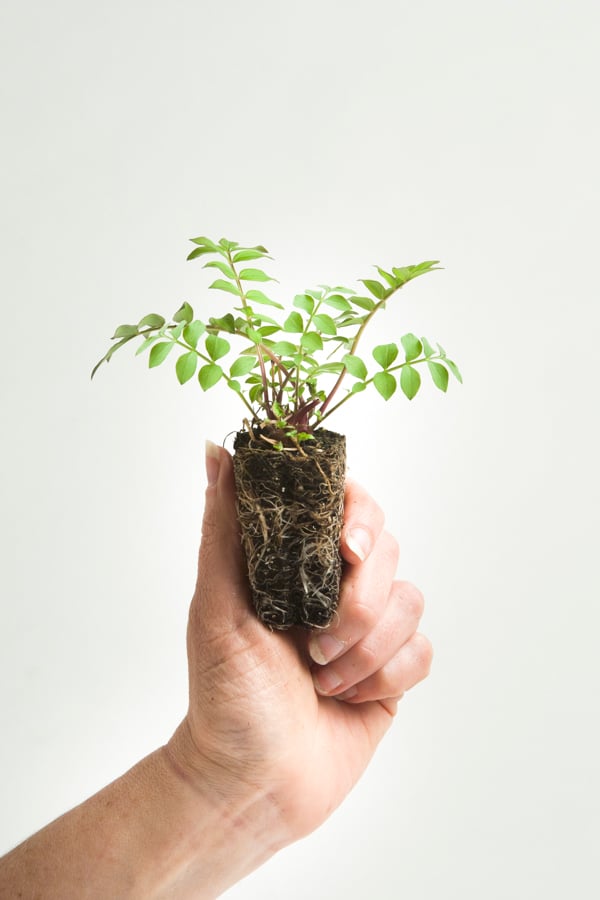
Size
1 ½” x 1 ½” across by 2 ¼” deep. They are referred to as 72s.
Recommended Uses
72s are starter plugs. They are usually transplanted into larger pots and readied for resale. They can be planted directly into the landscape but will require additional care due to their small size.
Pros
Economical because they require less resources, time, and space to produce. One of the cheapest purchasing options.
Cons
They are small, young plants with little margin for error: They can be damaged in shipping, require skill to nurse in the flats or pot up. They will require more TLC than larger plants when installed directly in the landscape. They should not be used as filler plants where previously established plants will compete for available resources.
50-Count Regular Plugs
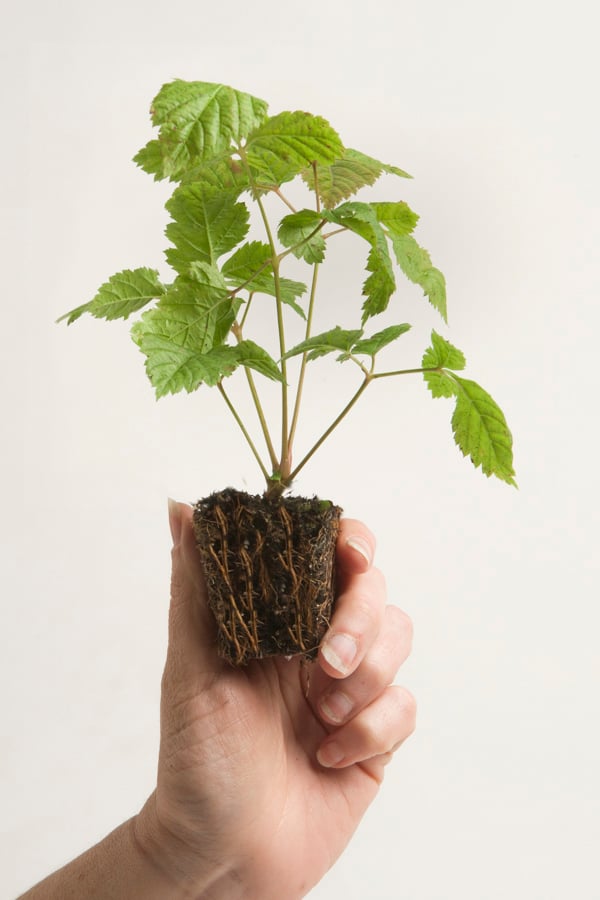
Size
1 ⅞” x 1 ⅞” across by 2 ⅜” deep. They are referred to as 50s, or “regular 50s”.
Recommended Uses
50s are starter plugs. They are usually transplanted into larger pots and readied for resale. They can be planted directly into the landscape but will require additional care due to their small size.They are wider than 72s and are often used for species that produce fibrous roots and/or roots that spread laterally rather than downward.
Pros
Economical because they require less resources to produce. One of the cheapest purchasing options. 50s are often reserved for plants with root systems that establish quickly, ensuring a fast turnaround in the greenhouse. This can be a clue that the plants will rapidly expand their roots in the landscape as well.
Cons
They are small, young plants with little margin for error: They can be damaged in shipping, require skill to nurse in the flats or pot up. They will require more TLC than larger plants when installed directly in the landscape. They should not be used as filler plants where previously established plants will compete for available resources.
50-Count Deep Plugs
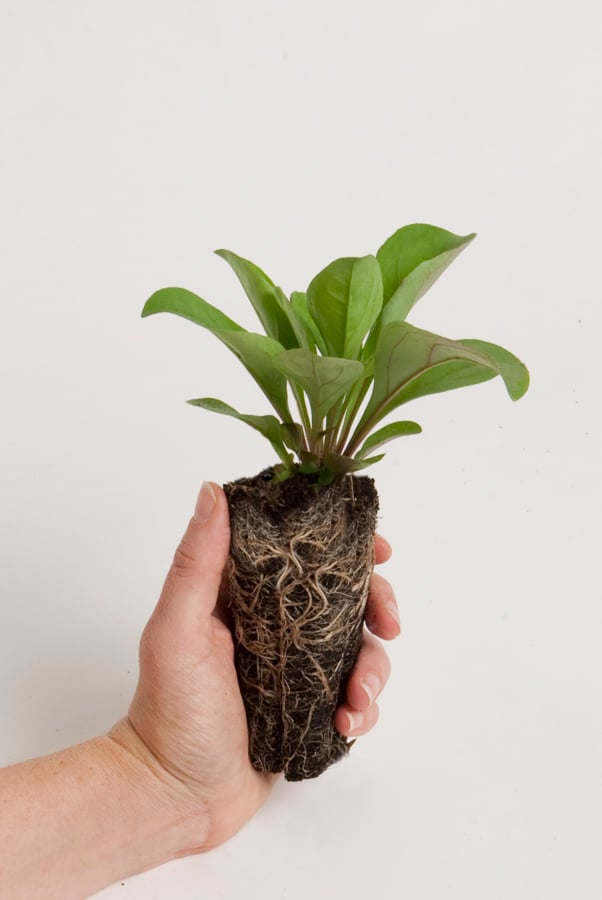
Size
2” x 2” across by 5” deep. They are referred to as deep 50s, DP50, or LP50®.
Recommended Uses
DP50s are landscape-ready plugs and can be planted as they are. They can also be used as starter plants to be finished in gallon-size pots.
Pros
They hit the sweet spot by combining the benefits of young plants with deep root systems and the lower cost of 50 plugs per flat. The plants are still at a vigorous stage of growth and establish quickly in the landscape. Due to their large size they require less TLC once planted than the smaller plug sizes. They are ideal for new installations as well as filling gaps in established plantings.
Cons
We haven’t really found any downsides to using DP50s. However, to install them we recommend purchasing a good soil knife, or a drill auger for large installations.
32-Count Deep Plugs
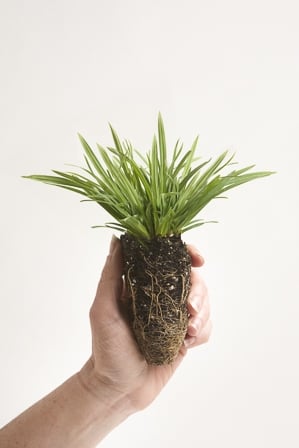
Size
2 ¼” x 2 ¼” across by 4” deep. They are referred to as 32s, or LP32s®. They can also come as individual cells—sometimes called liners—in a holding tray.
Recommended Use
32s are landscape-ready plugs and can be planted as they are. Because they are slightly wider, but shallower than DP50s, some growers reserve this size for growing species with shallow and/or fibrous root systems. They can also be used as starter plants to be finished in gallon-size pots.
Pros
They hit the sweet spot by combining the benefits of young plants with deep root systems and the lower cost of 32 plugs per flat. The plants are still at a vigorous stage of growth and establish quickly in the landscape. Due to their large size, they require less TLC once planted than the smaller plug sizes. They are ideal for new installations as well as filling gaps in established plantings.
Cons
We haven’t really found any downsides to using DP50s. However, to install them we recommend purchasing a good soil knife, or a drill auger for large installations.
3.5" Pot
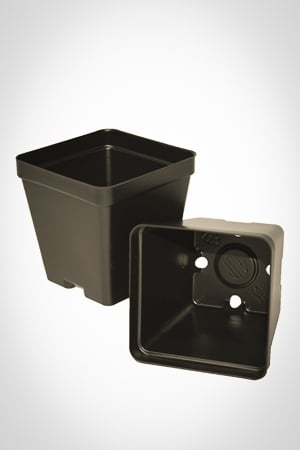
Size
3.5” x 3.5” across by 3.5” deep. This size is also referred to as a pint. Shape, height to width ratios, and volume vary within the nursery trade.
Recommended uses
Pints are landscape-ready, and can also be used as starter plants for quart and gallon containers.
Pros
Similar in volume to the larger plug sizes, they can be purchased individually. Plants are still at a vigorous stage of growth and establish quickly in the landscape. Ideal for plants with shallow, and/or fibrous root systems.
Cons
Not recommended for plants with deep taproots.
Quart
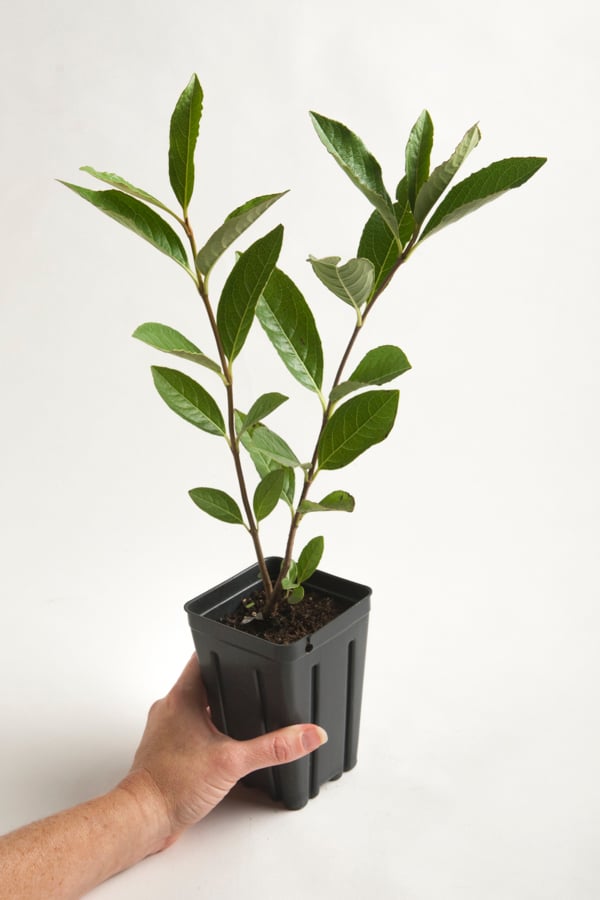
Size
4” x 4” across by 5” deep. Shape, height to width ratios, and volume vary within the nursery trade.
Recommended uses
Quarts are landscape-ready, and can also be used as starter plants for gallon containers. This is the most versatile container size, and accommodates plants with fibrous roots, taproots, and young woody plants.
Pros
Well-established, mature root systems. Will provide a rapid visual impact in the garden.
Cons
Installing quarts creates more soil disturbance than smaller plants and plugs.
38-Count Deep Plugs
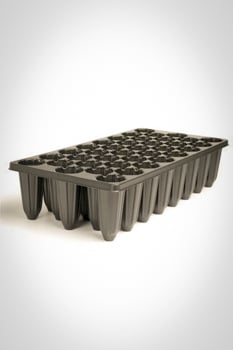
Size
2 ¼ ” x 2 ¼ ” across by 5” deep. They are referred to as deep 38s or DP38s.
Recommended Uses
38s are landscape-ready plugs and can be planted as they are. They are the same width as our 32s, but allow for an additional inch of root depth. They can also be used as starter plants to be finished in gallon-size containers or larger.
Pros
They hit the sweet spot by combining the benefits of young plants with deep root systems and the lower cost of 38 plugs per flat. The plants are still at a vigorous stage of growth and establish quickly in the landscape. Due to their large size they require less TLC once planted than the smaller plug sizes. They are ideal for new installations as well as filling gaps in established plantings.
Cons
We haven’t really found any downsides to using 38s. However, to install them we recommend purchasing a good soil knife, or a drill auger for large installations.
10-Count 4" Pots
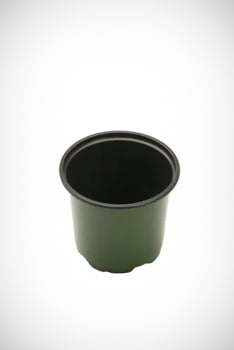
Size
Each pot is 4” in diameter by 3.5” deep. They are referred to as pints, although there are multiple that are described as such in the trade. These are on the larger size of this category, just shy of a trade quart.
Recommended Uses
4” pots are landscape-ready, and c
can also be used as starter plants to be potted up into gallon-size containers or larger. This container size accommodates plants with roots systems that tend to grow wide rather than putting down a deep tap root.
Pros
Well-established, mature root systems. Will provide a rapid visual impact in the garden.
Cons
Installing 4” pots creates more soil disturbance than smaller plants and plugs.
